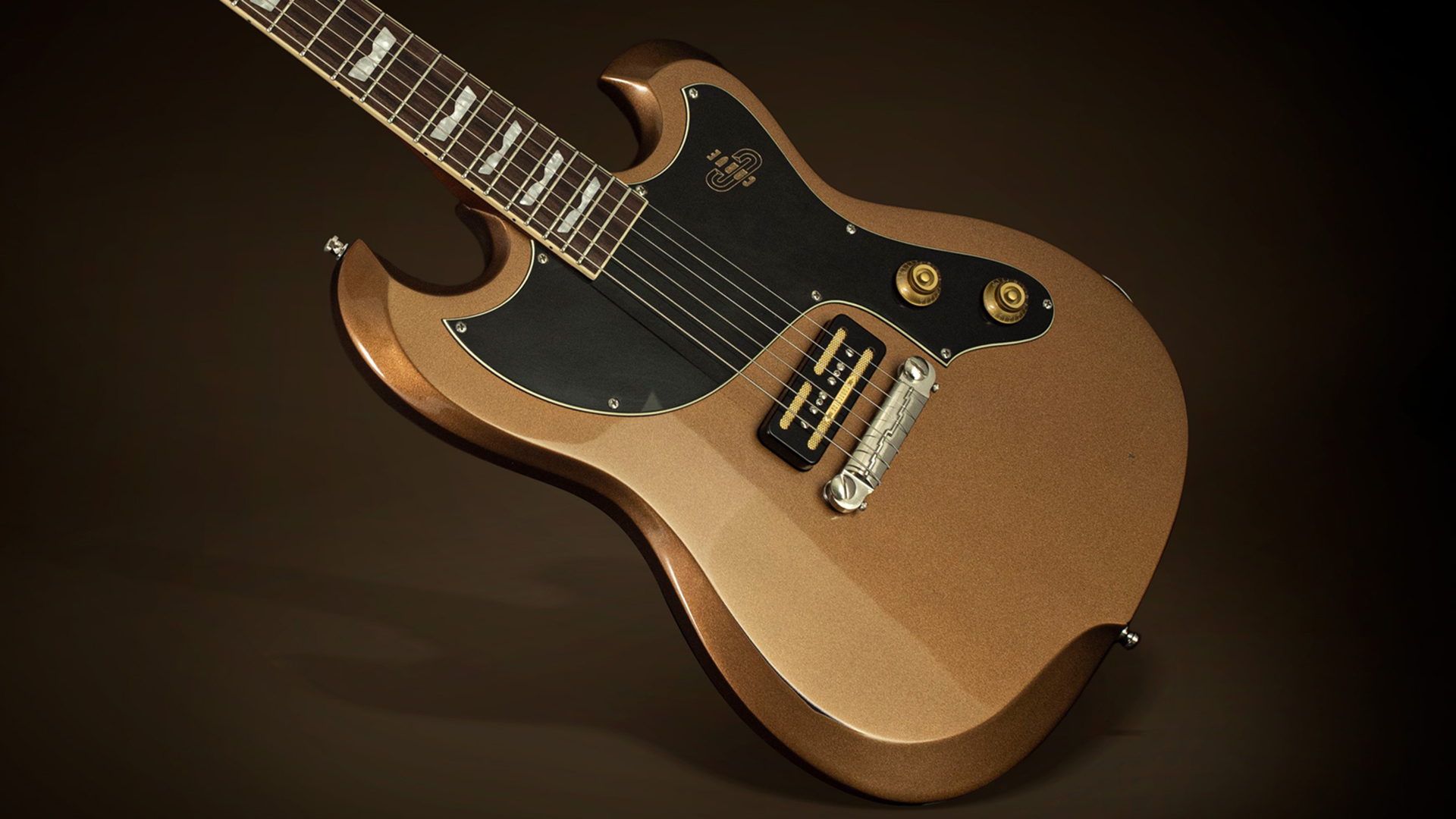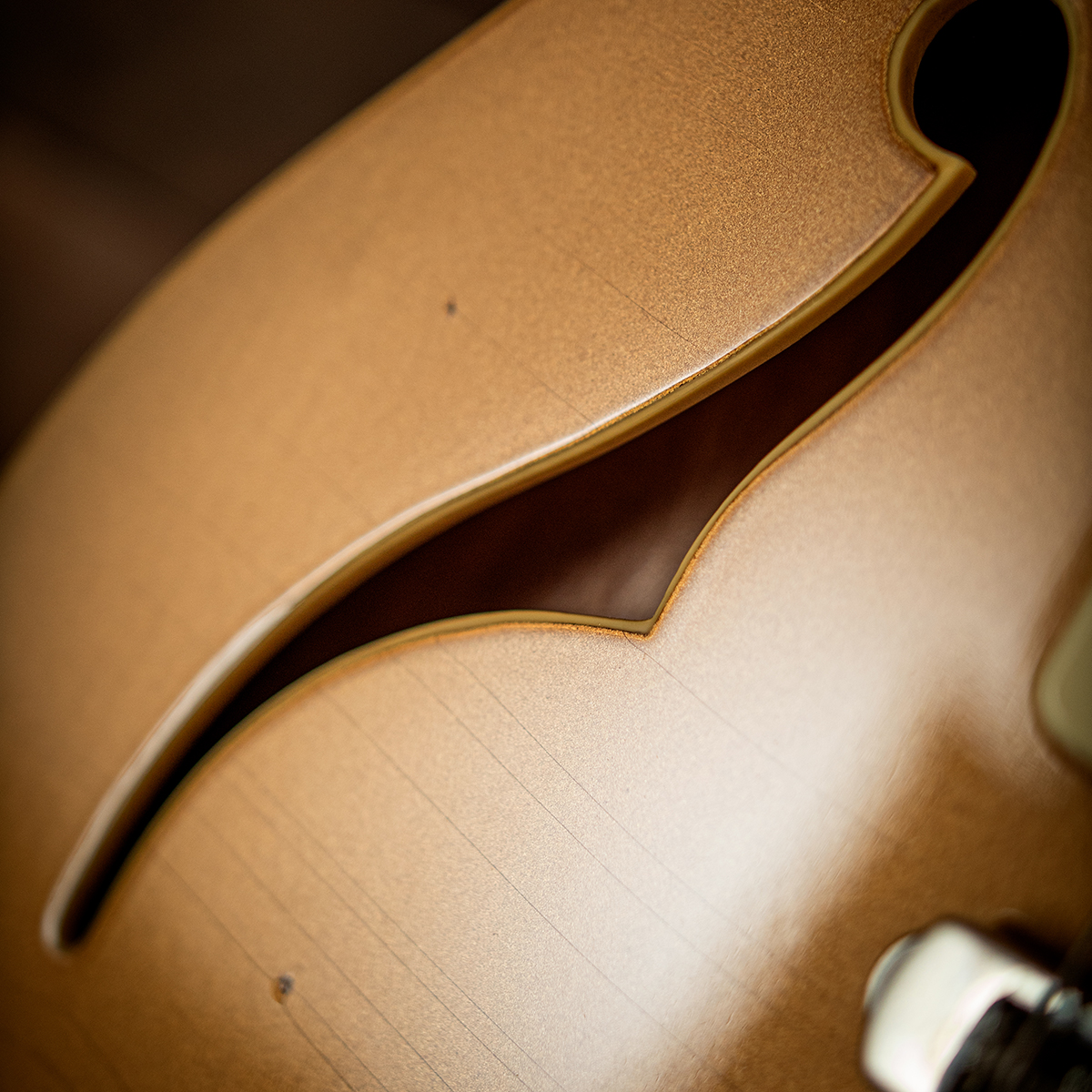
Luthiery and sustainability are two words that have not always sat comfortably alongside each other. From the (now) endangered tonewoods and questionable chemicals involved in some of the golden era electric guitar builds through to the carbon footprints of modern supply chain, guitar building has had its share of environmental impact.
This is changing, of course, with the big firms sourcing alternative FSC-certified tonewoods, improving production methods and plowing increasing amounts into R&D. However, with its unique Revival Collection builds, Danish brand Baum is offering one of the most interesting and appealing sustainability programs we’ve seen.
The line essentially rejuvenates guitars from its more affordable, Indonesian-made models that have failed in-house Quality Control tests – using the Danish Custom Shop luthier’s expertise and imagination to bring each one to vivid new life.
While the final products differ – from a gold-finished LP Junior-style Carve, with a 6-in-line headstock and light relic, to a Bigbsy-equipped Wingman – they all have unique combinations of specs and finishes and come in a lot cheaper than the regular Custom Shop output.
In US terms, it’s a bit like sending an Epiphone reject to Tom Murphy – and seeing what he comes up with.

“A lot of people don’t know cheap guitars require the same overall procedures, energy, and resources to make as an expensive guitar,” explains Baum CCO, Jeppe Garfunkel.
“But by compromising on the details, materials, and quality control, you get a guitar that [sometimes only] lasts months, if you’re lucky! A $99 Amazon guitar goes through the same manufacturing procedures as ours – it’s just not built to last.”
Baum’s Revival Collection essentially flips that model on its head. Giving its cheaper guitars the white-glove treatment.
What started as a solution to a problem has turned into a playground for our Custom Shop
Jeppe Garfunkel, Baum Guitars
Established by Morten Bau in 2015, the firm first focused on custom builds and Danish-made instruments before introducing offshore lines like the Original and VEGA series. Doing the final checks of its import models in-house means that both the offshore and custom builds go through the firm’s HQ in Aarhus, Denmark.
“Therefore, implementing this Revival as a new collection in our Custom shop felt like the most natural thing to do,” explains Garfunkel.
“This is where we already have the tools, skills, and time to invest in getting these guitars to feel and play like custom shop models and get them back on the road.”

One of the most intriguing elements of the range is its air of exclusivity. This is a world away from the Partscasters you’ve seen littering eBay listings.
The skills and labor of the Danish Custom Shop luthiers and the desirability of Bau’s designs account for the lion’s share of that, of course, but the nature of the builds also means they’ve very limited.
New Revival models only develop after an offshore batch has arrived and been inspected (and these are often sold out on pre-orders themselves, ensuring minimal waste or overproduction).
It works! In 2023, we ended up discarding less than 0.01 % of our production
Jeppe Garfunkel, Baum Guitars
As such, Garfunkel estimates the output is limited to about 24 instruments a year, with instruments dropping in small batches on the Baum site.
It means demand for them is high and it keeps things fresh for the Custom Shop team, too – as the specs coming in with each offshore batch change, so do the resulting Revival builds. Garfunkel describes this as “the fun part”.
“What started as a solution to a problem has turned into a playground for our Custom Shop, where we get to be creative and develop new concepts,” enthuses Garfunkel.
“The whole idea is to create an instrument not available in any current series, so you can grab something unique and custom-made.”

Baum’s already have a pretty custom look. You might have spotted them touted on YouTube or Instagram and the firm has built something of a cult following for its unique builds, laced with their tell-tale Goldsound pickups, proprietary hardware and a classily refined steam-age aesthetic.
“We reuse these on the Revival Series too,” explains Garfunkel. ‘We can change out pickups to offer new sounds or convert a model to either Bigsby or stop tail style. We upgrade the wiring in the guitar with high-end components and vintage cloth wiring, and we also spend a lot of time nursing the frets and fret ends as we’d do on a Custom Shop guitar.”
Price-wise, the instruments are not cheap – starting at around $3,000 – but that’s considerably more affordable than its regular Custom Shop output; and Garfunkel says the player response has been very good.
“We’ve gotten comments like ‘It’s the best guitar I own’ and ‘I’ve never had a guitar sound this good’, and to be honest there’s no better feedback to get than this,” says Garfunkel.
“[Ultimately] the end-user chooses these because they’re made differently. Differently from other Baum models, but also differently from how other brands make guitars.
“Some are drawn to these guitars because of their story and the sustainable approach, while others simply like them because they’re one-offs and great custom guitars.”

Guitar firms have made huge strides in sustainability, but often so-called ‘sustainable guitars’ fall either into cheap Partscasters, novelty reclaimed builds, or models toting the inclusion of a sustainable wood as the chief talking point.
Arguably, though, the most sustainable guitar is the one you’ve already got, so initiatives like Baum’s Revival series feel a lot more helpful and practical on that front – and, frankly, desirable to the average guitar buyer.
Baum’s initiatives are seeing good results, too. It’s financially viable, has created combinations that have since fed into core lines and the builds are understandably seen as more desirable by many players.
Then, when it comes to sustainability… “It works!” adds Garfunkel. “In 2023, we ended up discarding less than 0.01 % of our production.”


Bau and Garfunkel say it comes down to one word: respect. Respect for natural resources, for the materials and processes involved in getting a guitar made on the other side of the world into a US or European player’s hands – and for the instrument’s purpose.
“It’s the longevity aspect,” says Garfunkel. “Simply making great guitars that you wanna play for years and years – with a quality that is also worth repairing one day if needed.
“Maybe it’s a very Nordic way of approaching design and craftsmanship – if you also look at our furniture, or architecture here – but it’s a huge part of the Baum DNA too.”
For more on the Revival Collection, head to Baum Guitars.






